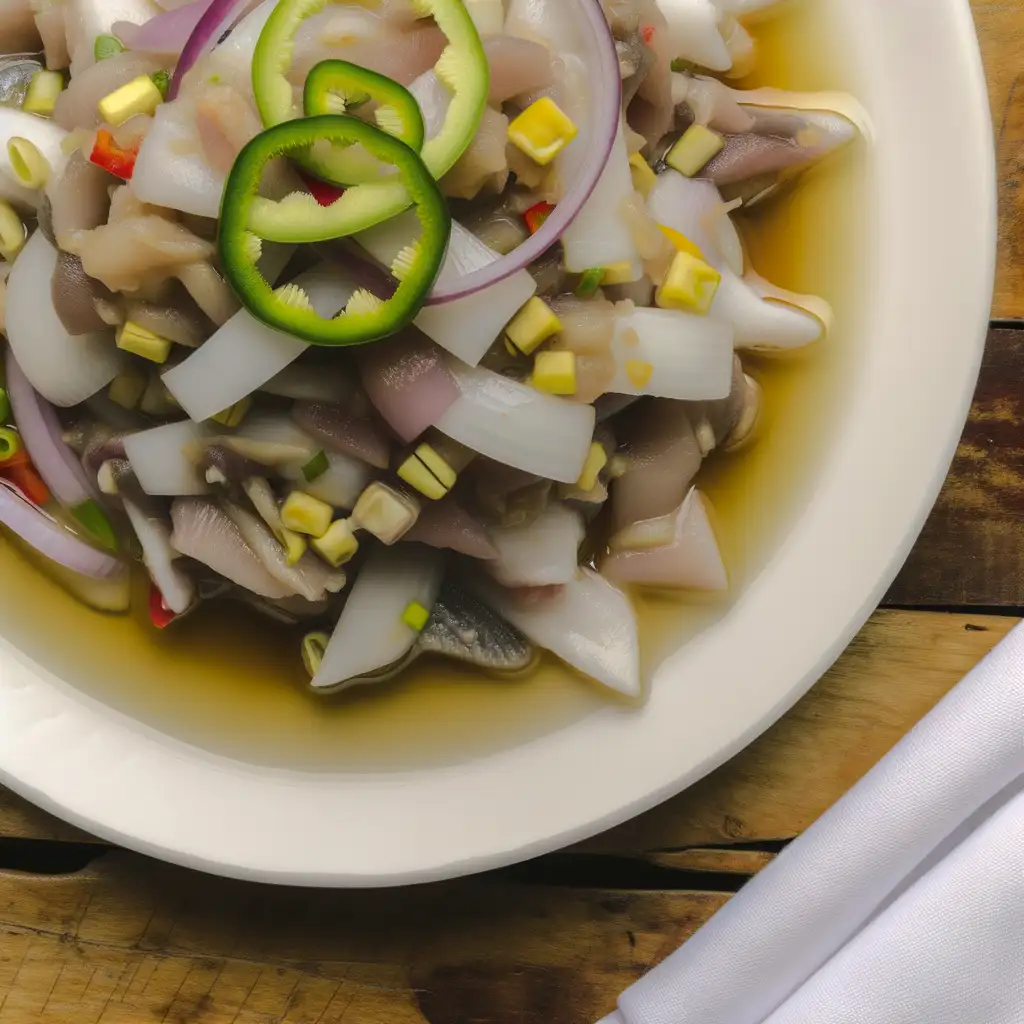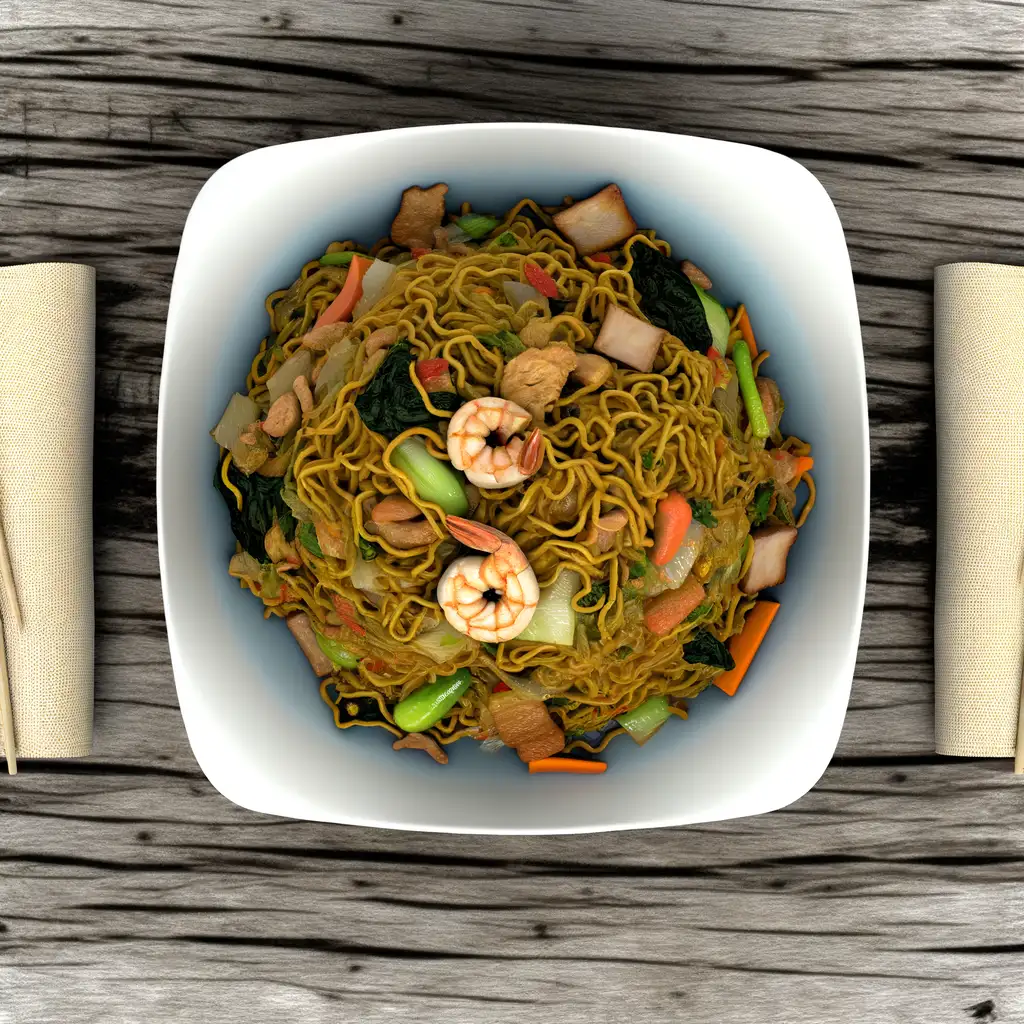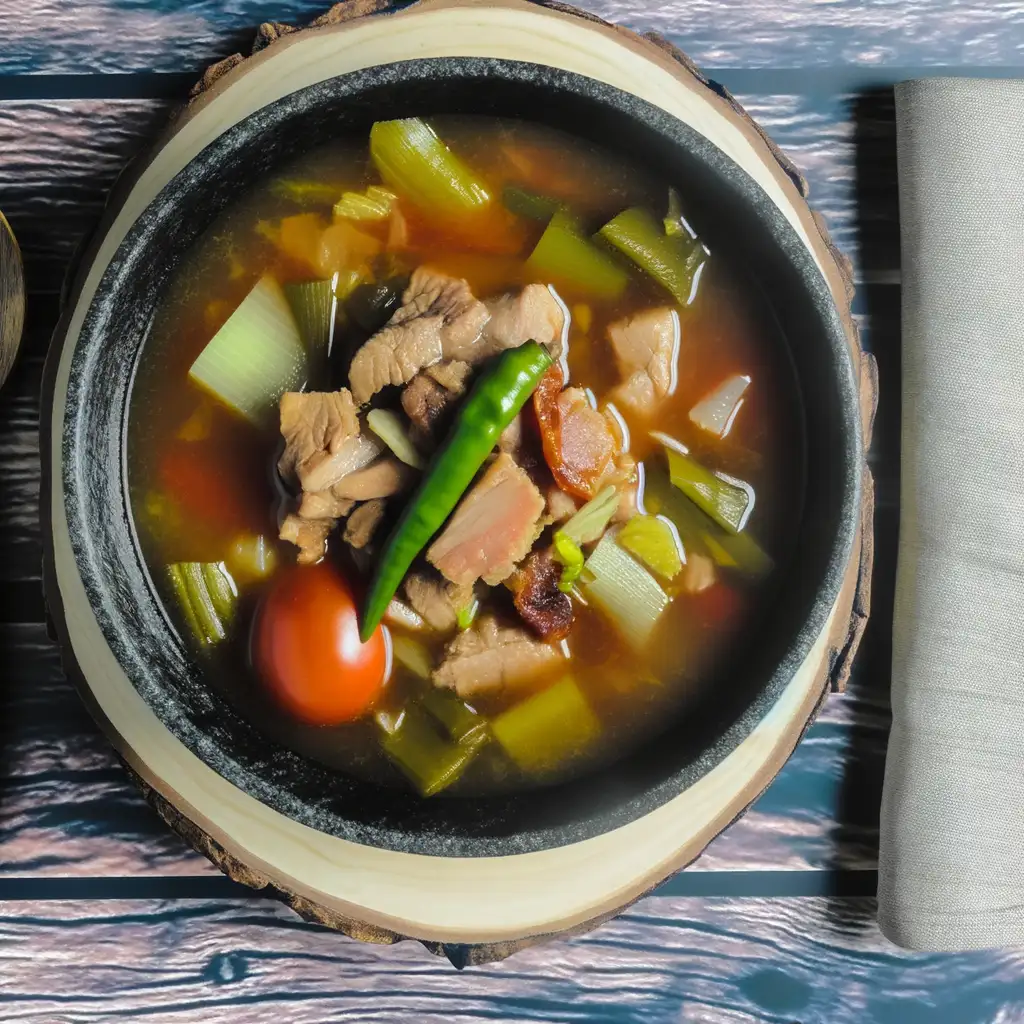


If you ever find yourself craving a place where time slows down and the ocean breeze carries a gentle lullaby,Bantayan Island in the Philippines is where you want to be. The moment you step off the boat,there’s this unmistakable calm that wraps around you—like the island itself is inviting you to breathe a little deeper and just be. The soft rustle of palm leaves,the distant chatter of fishermen hauling in their catch,and the warm,salty air create a rhythm that feels both soothing and alive. Walking along the white sandy shores,your feet sink into powdery sand that’s cool beneath the shade but warm under the sun. The water is a stunning shade of turquoise,so clear you can spot colorful fish darting around coral reefs just a few meters from shore. At local markets,the scent of freshly grilled seafood mingles with tropical fruits like mangoes and coconuts,tempting you to taste the island’s simple,fresh flavors. Don’t miss trying the local specialty,dried fish,which locals swear by as the perfect breakfast companion. What really makes Bantayan special is its laid-back charm and genuine warmth. The people here carry a quiet pride in their traditions,from the vibrant Sinulog festival to the slow,deliberate way they prepare meals and share stories. It’s a place where you can lose yourself in sunsets that paint the sky in fiery oranges and pinks,and find yourself in the kindness of strangers who feel more like old friends. If you want a trip that feels like a gentle escape rather than a whirlwind adventure,Bantayan Island will welcome you with open arms.
The information on this page is currently being reviewed by Tripkliq and should be used as a guide only
Eng word: Hello
Eng pronunciation: Hello
Local language: Hello
Eng word: Goodbye
Eng pronunciation: Pah-ah-lahm
Local language: Paalam
Eng word: Thank you
Eng pronunciation: Sah-lah-maht
Local language: Salamat
Eng word: How much
Eng pronunciation: Tag-pee-lah
Local language: Tagpila
Eng word: Toilet
Eng pronunciation: Kah-sil-yas
Local language: Kasilyas
Eng word: Help me
Eng pronunciation: Tah-bahng-ee koh
Local language: Tabangi ko
Eng word: Yes
Eng pronunciation: Oh-oh
Local language: Oo
Eng word: No
Eng pronunciation: Dee-lee
Local language: Dili
Eng word: Excuse me
Eng pronunciation: Pah-sigh-loh-ah koh
Local language: Pasayloa ko
Bantayan Island was already inhabited by indigenous people long before the Spanish arrived in the Philippines. The island's early settlers were known for their fishing and farming skills.
During the Spanish colonization in the 16th century, Bantayan Island became an important part of the Spanish Empire. The Spanish influence is still evident in the island's architecture and culture.
Built in 1580, the Sts. Peter and Paul Church is one of the oldest churches in the Philippines. It stands as a testament to the island's rich religious history and Spanish colonial architecture.
Bantayan Island played a significant role in the Manila-Acapulco Galleon Trade during the Spanish era. The island served as a stopover point for galleons traveling between the Philippines and Mexico.
During World War II, Bantayan Island was occupied by Japanese forces. The islanders showed resilience and bravery, contributing to the eventual liberation of the Philippines.
Bantayan Island is known as the 'Fishing Basket of Cebu' due to its thriving fishing industry. The island supplies a significant portion of the fish consumed in Cebu and other parts of the Philippines.
Bantayan Island is famous for its unique Holy Week celebrations. The island attracts thousands of visitors who come to witness the grand processions and religious activities.
Bantayan Island is renowned for its pristine white-sand beaches and crystal-clear waters. The island's natural beauty has made it a popular destination for tourists seeking a tropical paradise.
The island is home to a rich cultural heritage, with traditional music, dance, and crafts still practiced by the local community. Visitors can experience the island's vibrant culture through various festivals and events.
In Bantayan Island, the most common Power Adaptor is Type A, Type B.



Roasted whole pig, known for its crispy skin and tender meat, often served during special occasions and celebrations.

A traditional Filipino ceviche made with fresh fish marinated in vinegar and citrus, mixed with onions, ginger, and chili.

A stir-fried noodle dish that comes in various styles, often made with vegetables, meat, and seafood, symbolizing long life.

A sour pork soup made with tamarind, tomatoes, and various vegetables, known for its refreshing and tangy flavor.

A delicious coconut pie made with young coconut meat and a creamy filling, often enjoyed as a dessert or snack.

Freshly caught seafood, including fish, shrimp, and squid, grilled to perfection and often served with a side of vinegar dipping sauce.

A local dried fish delicacy, usually served fried and paired with rice and vinegar, popular for breakfast.
Imagine stepping into a place where history hums through the streets and the ocean breeze carries the scent of salty adventure—that’s Cebu City for you. The moment you arrive,there’s this lively energy that wraps around you,a mix of old-world charm and modern buzz. You’ll find yourself wandering through colorful markets where the chatter of vendors blends with the aroma of freshly grilled street food—think sweet,smoky lechon sizzling over coals,tempting you at every corner.
Cebu’s character is a beautiful blend of the past and present. Ancient Spanish forts and centuries-old churches stand proudly alongside sleek cafes and vibrant street art. The city pulses with warmth,not just from the tropical sun but from the people who greet you with genuine smiles and stories. At night,the streets light up with music and laughter,and you can almost taste the festive spirit in the air.
What really makes Cebu unforgettable is how it feels alive in every sense. You can hear the waves crashing nearby,see the colorful jeepneys weaving through traffic,smell the tropical fruits at the market,and feel the warmth of the sun on your skin as you explore. It’s a place where culture,history,and everyday life blend seamlessly,inviting you to dive in and experience its vibrant soul firsthand.
If you ever find yourself wandering through the heart of Bohol,Tagbilaran City greets you with a warm,unhurried rhythm that feels like a gentle hug after a long journey. The city hums with life—not the overwhelming buzz of a metropolis,but a lively,welcoming energy where jeepneys rattle by and street vendors call out their fresh fruit and local snacks. As you stroll along the waterfront,the salty breeze carries the faint scent of grilled seafood mingling with tropical flowers,inviting you to slow down and savor the moment.
Tagbilaran’s charm lies in its blend of old and new. You’ll catch glimpses of Spanish-era churches standing proudly beside colorful markets where locals barter over ripe mangoes and sticky rice treats. The city’s pulse is deeply tied to its people—friendly,easygoing,and proud of their heritage. At night,the streets light up with laughter and music spilling from small eateries where you can taste the rich flavors of Boholano cuisine,like the sweet,tender kalamay or freshly caught fish cooked with coconut milk.
What really stays with you is the city’s sense of community and its connection to the sea. Whether you’re watching fishermen haul in their catch at dawn or joining a lively fiesta,Tagbilaran feels like a place where stories are shared over steaming cups of coffee and where every corner invites you to discover a new layer of its soul. It’s not just a stopover—it’s a place that quietly pulls you in and makes you want to stay a little longer.
If you ever find yourself craving a place where nature’s calm meets a laid-back island spirit,Puerto Princesa is where you want to be. The moment you step off the plane,there’s this warm,salty breeze that wraps around you,carrying the faint scent of the sea and tropical blooms. It’s a city that doesn’t rush — people move with a gentle rhythm,and the streets hum softly with the chatter of locals and the occasional strum of a guitar from a nearby café. It feels like a breath of fresh air,both literally and figuratively.
What really makes Puerto Princesa stand out is its deep connection to nature. The famous Underground River is just the beginning — lush mangroves,crystal-clear waters,and vibrant coral reefs surround the city,inviting you to explore. You can hear the calls of exotic birds in the morning and watch fishermen bring in their catch as the sun dips low,painting the sky in shades of pink and orange. The food scene here is a delightful surprise too — fresh seafood grilled right on the beach,sweet tropical fruits bursting with flavor,and local dishes that tell stories of the sea and the land.
But beyond the sights and tastes,it’s the people who make Puerto Princesa unforgettable. Their warmth and genuine smiles make you feel like you’re not just visiting,but truly welcomed. Whether you’re wandering through the bustling market or sharing a laugh with a vendor,there’s a sense of community that lingers long after you leave. It’s a place that invites you to slow down,soak in the simple joys,and leave with a heart full of stories.
If you ever find yourself craving a place where history hums softly alongside the buzz of everyday life,Iloilo City is where you want to be. The moment you step into its streets,there’s this warm,inviting energy—like the city is gently nudging you to slow down and savor its stories. You’ll notice the colonial-era buildings standing proudly beside modern cafes,their facades telling tales of centuries past. The air carries a subtle mix of salty sea breeze and the sweet aroma of freshly baked pan de sal,making every morning feel like a comforting embrace.
Walking through Iloilo,you’ll hear the lively chatter of locals,the clinking of glasses in cozy eateries,and the distant strum of guitars from street performers. The city’s character shines brightest in its festivals,especially the Dinagyang,where vibrant costumes and rhythmic drums fill the streets with infectious joy. But even on quieter days,the genuine smiles of Ilonggos and their easygoing hospitality make you feel like you’ve found a second home.
And then there’s the food—oh,the food! From the rich,savory batchoy served steaming hot in humble noodle shops to the sweet,creamy taste of fresh mangoes,every bite is a celebration of local flavors. Iloilo isn’t just a place to visit; it’s a place to experience,where every corner invites you to pause,breathe,and fall a little in love with its soul.
Dubbed the 'City of Gentle People,' Dumaguete is a charming coastal city with access to Apo Island,a world-class diving destination,and Siquijor Island,known for its mystical charm and pristine beaches.
ExploreIf you ever find yourself dreaming of a place where the sea feels like a warm embrace and the air carries the scent of salt and tropical blooms,El Nido is that kind of magic. From the moment you step off the boat or wander through its laid-back streets,there’s this undeniable calm mixed with a spark of adventure. The limestone cliffs rise dramatically from turquoise waters,creating a playground of hidden lagoons and secret beaches that seem almost too beautiful to be real. You’ll hear the gentle lapping of waves,the distant chatter of fishermen,and the occasional call of tropical birds,all blending into a soothing soundtrack that makes you want to slow down and just breathe it all in.
The town itself pulses with a warm,welcoming energy. Locals greet you with genuine smiles,and the small cafes and eateries invite you to savor fresh seafood grilled right in front of you,bursting with flavors that tell stories of the sea. At night,the sky turns a deep velvet,and the stars feel close enough to touch,while the soft hum of acoustic guitars drifts from beach bars. It’s a place where time seems to stretch,letting you lose yourself in the rhythm of island life.
What makes El Nido truly special is how it balances raw natural beauty with a vibrant,heartfelt culture. Whether you’re kayaking through crystal-clear waters,hiking up to panoramic viewpoints,or simply sipping a cold drink while watching the sunset paint the sky in fiery hues,El Nido invites you to connect—with nature,with people,and with a sense of wonder that stays with you long after you leave.
Tourists may book accommodations online that look appealing, but upon arrival, they are offered subpar rooms or asked to pay extra for the advertised amenities.
Some money changers may offer poor exchange rates or shortchange tourists during transactions.
Vendors may sell souvenirs claiming they are locally handmade or authentic, but they are actually mass-produced or imported items sold at a premium price.
Individuals may pose as tour guides and offer their services, but they provide little value or inaccurate information while charging high fees.
Tourists may be quoted a low price for activities like snorkeling or diving, only to be charged additional fees for equipment rental, guides, or other services.
Some operators may charge inflated prices for island hopping tours, especially if tourists do not compare rates or negotiate beforehand.
Some tricycle or motorcycle drivers may charge tourists significantly higher fares than the standard rates, especially if the tourists are unfamiliar with local pricing.
Boat operators may not provide clear pricing upfront and later demand excessive payment after the trip, taking advantage of tourists unfamiliar with standard rates.
The Philippines has very strict laws regarding the possession, use, and trafficking of illegal drugs. The Comprehensive Dangerous Drugs Act of 2002 (Republic Act No. 9165) imposes severe penalties, including long prison sentences and even the death penalty for serious offenses. Tourists should avoid any involvement with illegal drugs to avoid severe legal consequences.
In Bantayan Island, as in the rest of the Philippines, smoking is regulated under the Tobacco Regulation Act of 2003 (Republic Act No. 9211). Smoking is prohibited in public places such as schools, hospitals, public transportation terminals, and government offices. Designated smoking areas are allowed but must comply with specific regulations. Tourists should look for designated smoking areas and avoid smoking in prohibited zones to avoid fines.
Vaping is subject to similar regulations as smoking in the Philippines. The use of e-cigarettes is prohibited in public places where smoking is banned. This includes schools, hospitals, public transportation, and government buildings. Tourists should use designated vaping areas and be mindful of local regulations to avoid penalties.
What are other people saying about Bantayan Island?
Recent Social posts about Bantayan Island
There is nothing to show you for now.